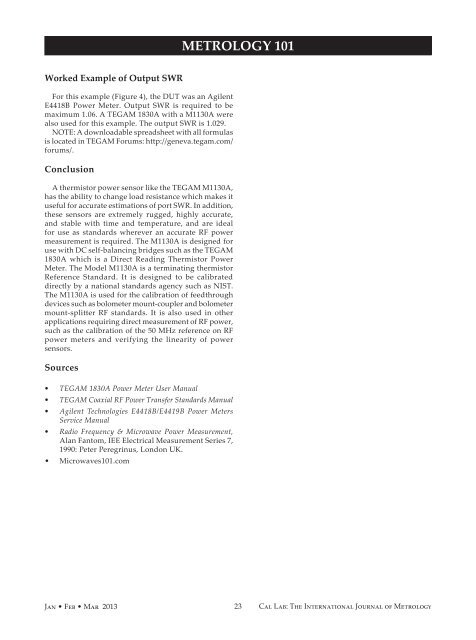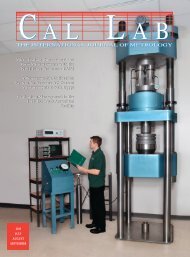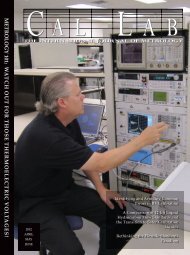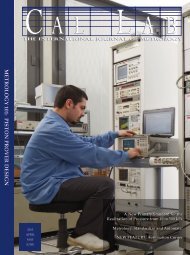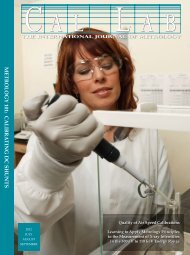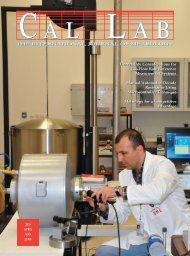Magazine – PDF - Cal Lab Magazine
Magazine – PDF - Cal Lab Magazine
Magazine – PDF - Cal Lab Magazine
Create successful ePaper yourself
Turn your PDF publications into a flip-book with our unique Google optimized e-Paper software.
METROLOGY 101Worked Example of Output SWRFor this example (Figure 4), the DUT was an AgilentE4418B Power Meter. Output SWR is required to bemaximum 1.06. A TEGAM 1830A with a M1130A werealso used for this example. The output SWR is 1.029.NOTE: A downloadable spreadsheet with all formulasis located in TEGAM Forums: http://geneva.tegam.com/forums/.ConclusionA thermistor power sensor like the TEGAM M1130A,has the ability to change load resistance which makes ituseful for accurate estimations of port SWR. In addition,these sensors are extremely rugged, highly accurate,and stable with time and temperature, and are idealfor use as standards wherever an accurate RF powermeasurement is required. The M1130A is designed foruse with DC self-balancing bridges such as the TEGAM1830A which is a Direct Reading Thermistor PowerMeter. The Model M1130A is a terminating thermistorReference Standard. It is designed to be calibrateddirectly by a national standards agency such as NIST.The M1130A is used for the calibration of feedthroughdevices such as bolometer mount-coupler and bolometermount-splitter RF standards. It is also used in otherapplications requiring direct measurement of RF power,such as the calibration of the 50 MHz reference on RFpower meters and verifying the linearity of powersensors.Sources• TEGAM 1830A Power Meter User Manual• TEGAM Coaxial RF Power Transfer Standards Manual• Agilent Technologies E4418B/E4419B Power MetersService Manual• Radio Frequency & Microwave Power Measurement,Alan Fantom, IEE Electrical Measurement Series 7,1990: Peter Peregrinus, London UK.• Microwaves101.comJan • Feb • Mar 201323<strong>Cal</strong> <strong>Lab</strong>: The International Journal of Metrology


